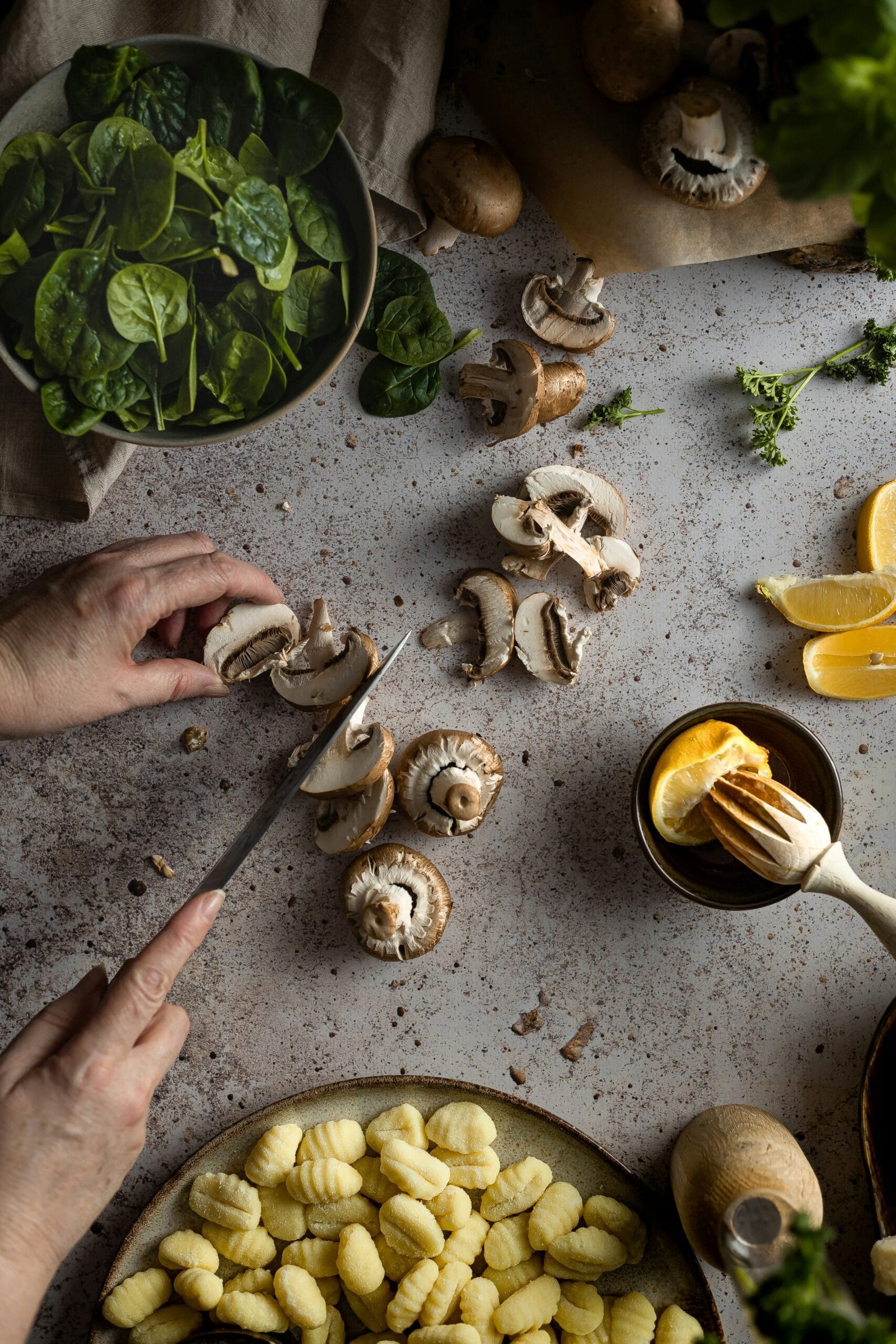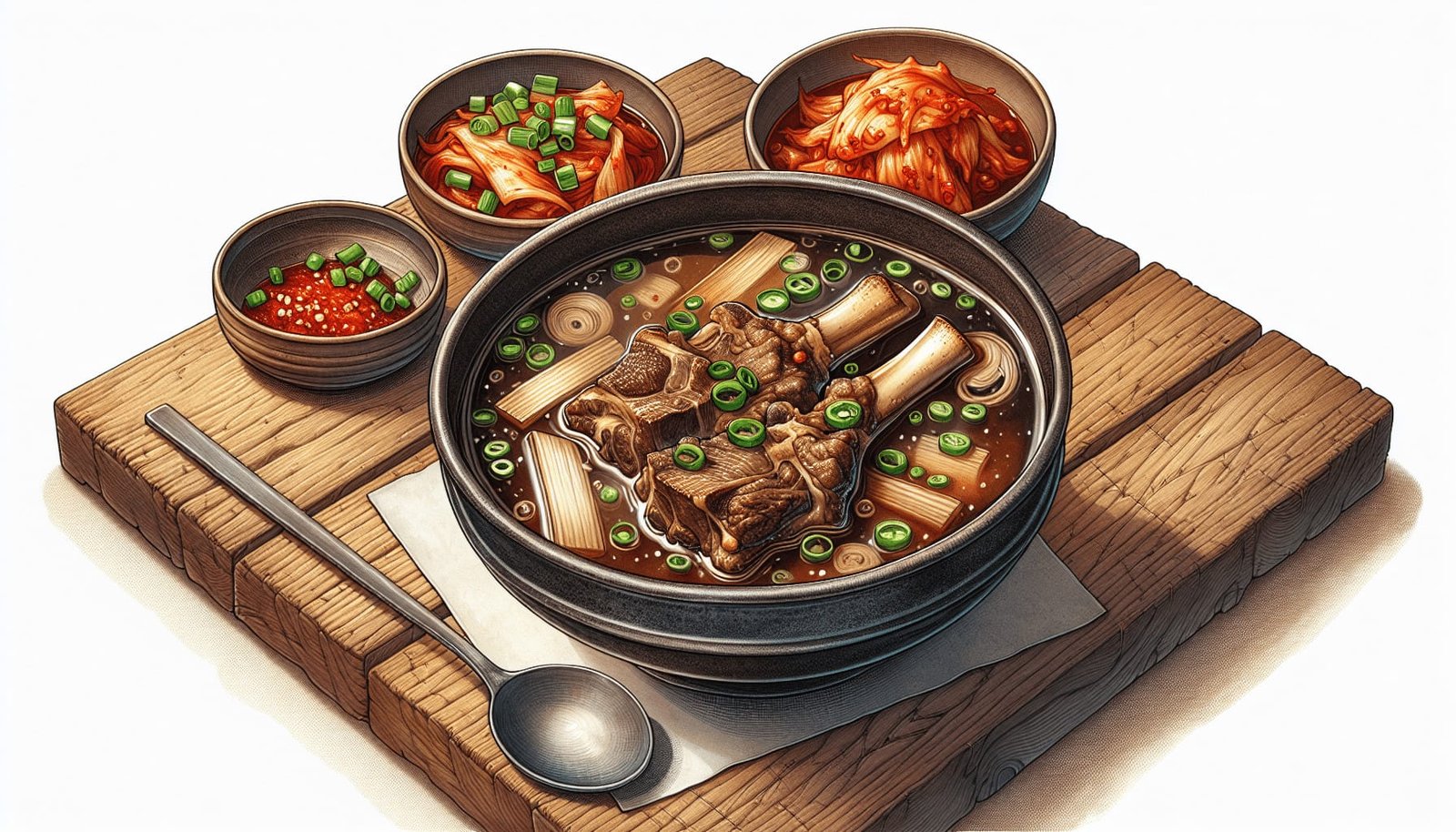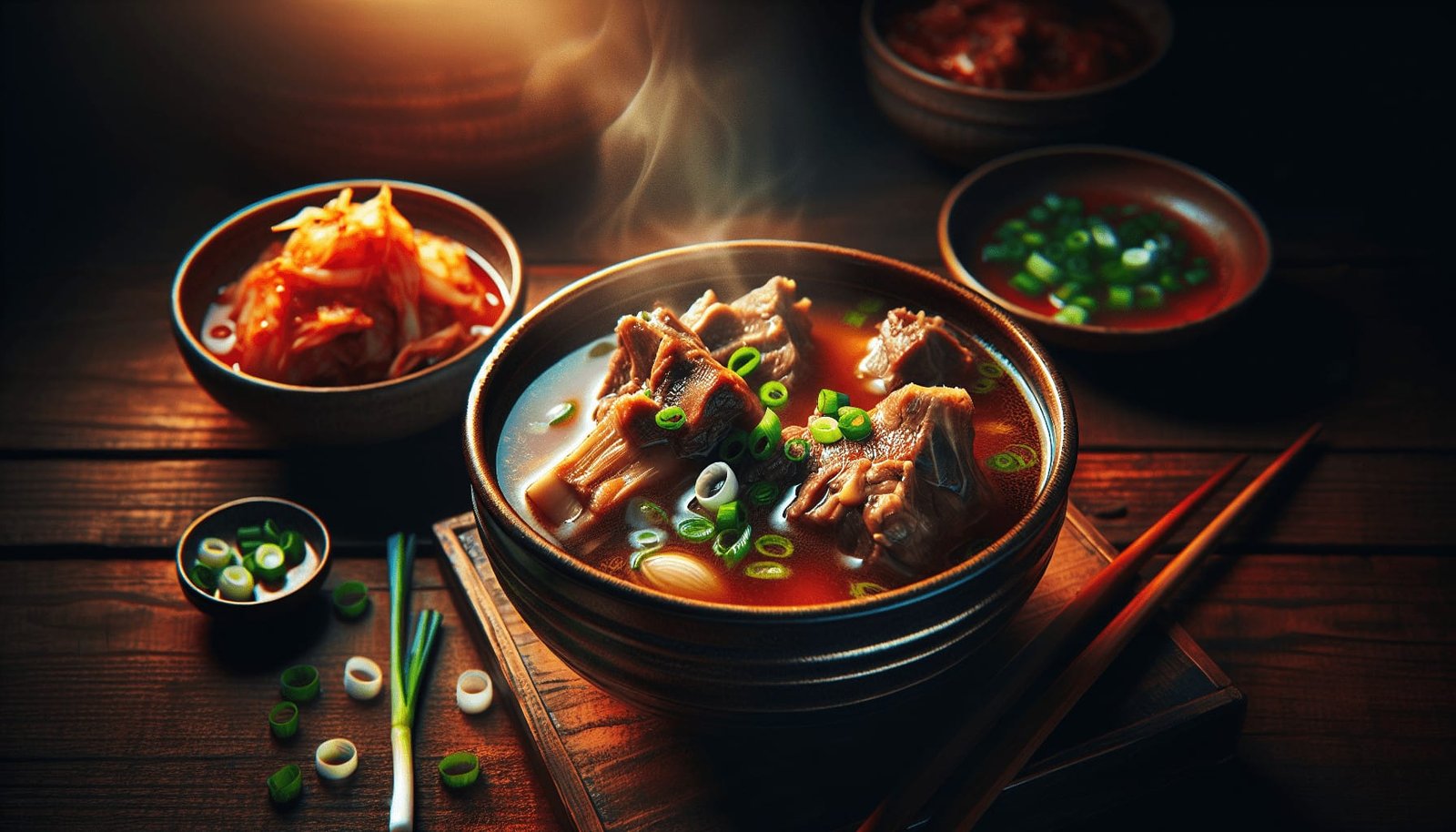Have you ever indulged in the comforting warmth of a traditional Korean oxtail soup, known as kkori gomtang? This dish is a soothing, hearty soup that holds a cherished place in Korean cuisine, celebrated for its rich broth and unique, melt-in-your-mouth texture. If you’re curious about how to create this culinary delight in the heart of your own kitchen, you’re in the right place. In this article, we’ll walk you through each savory step, providing you with the essentials to prepare and serve kkori gomtang in a way that evokes the warmth and tradition of Korea.

Understanding Kkori Gomtang: The Soulful Essence of Korean Cuisine
Kkori gomtang is more than just a soup; it’s an experience steeped in tradition. This dish has been relished by generations and is known for its deep, satisfying flavors and health benefits. Originating from humble beginnings, it’s a reminder of the resourcefulness of using every part of the animal to create something nourishing. Let’s explore what makes this dish unique.
The Ingredients: What Makes Kkori Gomtang Special
The main ingredient that sets kkori gomtang apart is oxtail. This part of the cow is rich in collagen and marrow, which gives the soup its signature silky texture. Along with oxtail, the soup is typically crafted with a few simple ingredients that enhance its flavors.
| Ingredient | Purpose |
|---|---|
| Oxtail | Provides depth and rich flavor |
| Water | Forms the base of the broth |
| Garlic | Adds aromatic depth |
| Onion | Offers sweetness to balance the broth |
| Ginger (optional) | Adds warmth and complexity to the soup |
| Green onions | Used for garnish and added freshness |
| Salt | Enhances the natural flavors of the ingredients |
| Pepper | Adds a subtle heat and complements the richness |
Each ingredient plays a crucial role in giving kkori gomtang its beloved taste and texture, working harmoniously to create a balanced and hearty dish.
The Nutritional Benefits of Oxtail Soup
Not only is kkori gomtang delicious, but it is also packed with nutritional benefits. The collagen-rich oxtails are excellent for joint health, skin elasticity, and overall vitality. The long, slow-cooking process extracts minerals and nutrients, creating a broth that is as healthy as it is flavorful.
Kkori gomtang can be enjoyed as a fortifying meal, comforting during cold weather or whenever a nourishing bowl of soup feels just right. It’s this combination of taste and health benefits that has kept it a staple in Korean kitchens for centuries.
Preparing Kkori Gomtang: Step-by-Step Guide
The secret behind a perfect kkori gomtang lies in patience and precision. This dish is all about letting flavors develop over time to achieve that deep, complex taste. Let’s guide you through the process, ensuring you understand each step for optimal results.
Step 1: Preparing the Oxtail
The foundation of this dish begins with the careful preparation of oxtail. Since oxtail can be fatty, it’s crucial to clean and blanch the oxtail to remove impurities, ensuring a clear and clean-tasting broth.
- Rinse the oxtails under cold water to remove surface blood and debris.
- Blanch the oxtails by placing them in a large pot with enough water to cover, bringing it to a boil, and then allowing it to boil for 5-10 minutes.
- Rinse the oxtails again under cold water to remove scum.
This process not only cleans the oxtail but also sets the stage for a broth that’s free of greasiness and cloudiness.
Step 2: Creating the Broth
Good broth is the hallmark of successful kkori gomtang. This step is all about slow cooking and patience.
- Combine the cleaned oxtails in a pot with fresh water, onion, garlic, and optional ginger.
- Bring to a boil and then reduce to a simmer.
- Skim any foam that rises to the surface during the first 30 minutes of simmering.
Allow the broth to simmer gently for several hours (at least three to four but preferably longer) to extract the full flavors and nutrients from the oxtail. The aim is a milky, rich broth that is the essence of the soup.
Step 3: Seasoning and Final Touches
Once your broth has reached rich perfection, it’s time to finalize the soup with seasoning and garnishes.
- Season the broth with salt and pepper to taste. It’s best to do this gradually, tasting as you go, to find the perfect balance.
- Garnish the soup with sliced green onions before serving to add freshness and a pop of color.
Remember, the beauty of kkori gomtang lies in its simplicity. The gentle seasoning allows the natural flavors to shine, making it a comforting and delightful dish.

Serving Kkori Gomtang: Enjoying Your Culinary Creation
Serving kkori gomtang is about celebrating the effort that goes into its preparation. Traditionally served with steamed rice, the experience of enjoying kkori gomtang is about savoring each component.
Pairing with Rice and Banchan
Korean meals are often incomplete without rice and banchan (side dishes), and kkori gomtang is no exception.
- Rice: Serve a bowl of steamed white rice alongside your kkori gomtang for a hearty and satisfying meal.
- Banchan: Offer a variety of side dishes, such as kimchi, pickled vegetables, or sautéed greens, to complement the rich flavors of the soup.
Banchan provides a contrast of textures and flavors, enhancing the overall enjoyment of the meal.
Tips for a Perfect Dining Experience
To ensure that your guests savor their kkori gomtang in true Korean fashion, consider these tips:
- Provide small bowls for rice and separate soup bowls for an authentic presentation.
- Encourage guests to mix their rice into the soup if they desire, allowing the broth to enhance the rice’s flavor.
- A small dipping dish with soy sauce, sesame oil, or gochujang (Korean red chili paste) can be provided for those who enjoy an added kick.
Kkori gomtang is not just about the soup itself, but the full dining experience.

Understanding the Cultural Significance of Kkori Gomtang
Beyond its delicious taste and nutritional benefits, kkori gomtang holds a deeper cultural significance. In Korea, sharing meals like kkori gomtang is a way of bringing people together, enriching bonds over shared experiences.
A Dish for Celebrations and Solace
Kkori gomtang serves multiple roles in Korean households. Traditionally, it has been a dish of celebrations — a special meal prepared for significant occasions or guests. Its long preparation symbolizes the effort and dedication of the host, considered a significant show of respect and warmth toward loved ones.
At the same time, kkori gomtang is comforting food often prepared during times of illness or fatigue for its recuperative properties. The nourishing qualities of the broth make it a go-to dish when one needs a boost in energy and health.
Preserving Tradition in Modern Times
In today’s fast-paced world, the slow, patient cooking of kkori gomtang serves as a reminder of tradition and family heritage. Many Korean families still reserve a day to gather and prepare this soup, reinforcing its value as a cherished cultural practice. It is as much about creating bonds and memories as it is about crafting a delicious meal.

Tips and Tricks for Mastering Kkori Gomtang
Even if you’re new to making traditional Korean soups, don’t worry. Embarking on this flavorful journey is as much about learning as it is about cooking. Here are a few additional tips to help you master kkori gomtang seamlessly:
Quality Ingredients
- Always opt for high-quality oxtail. A better cut will contribute significantly to the richness of your broth.
- Fresh garlic and onions are recommended for a more vibrant taste.
Patience is Key
- Take the time to simmer the broth slowly. Rushing the process can result in a less flavorful and less nutrient-dense dish.
- The longer the broth simmers, the deeper the flavors will become — a key characteristic of the perfect kkori gomtang.
Skim Attentively
- Regularly skimming the foam during the initial boiling stages is crucial for clarity of the broth. This will also help in achieving a cleaner taste.
Experiment with Garnishes
- Don’t hesitate to experiment with garnishes. For instance, adding a dash of sesame seeds or fresh chili slices can add an interesting dimension to the soup.
Adjusting to Personal Preferences
- While following tradition is essential, there’s also room to tweak ingredients, like adding more ginger for warmth or less garlic for a milder taste, to cater to your palate.
By incorporating these tips, your journey in making kkori gomtang should feel approachable and rewarding, allowing you to bring a taste of Korea to your dining table successfully.
Embrace the Experience
In the end, making kkori gomtang is an experience—one that invites you to slow down and enjoy the culinary process. It’s about finding enjoyment in the preparation, taking pride in sharing a dish steeped in tradition, and cherishing the serene delight of each spoonful.
As you delve into the preparation and service of kkori gomtang, remember that you are not just crafting a meal but also partaking in a splendid cultural tradition. Let every taste transport you to Korea’s bustling kitchens and welcoming homes, where kkori gomtang has nourished both body and soul for centuries. By mastering this recipe, you’ll discover the profound comfort of a dish steeped in heritage, ready to be shared with those you hold dear.

